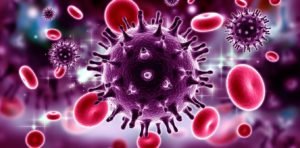EDRC533-Medical and Psychological Aspects of Disability
Where to Buy Essays Online
WE WRITE ESSAYS FOR STUDENTS
Tell us about your assignment and we will find the best writer for your paper.
Write My Essay For Me| Rank | Website | Students’ Rating | Info | |
|---|---|---|---|---|
 |
GlobalEssayWriters.com
 |
Quality:10
Price:9.9
Delivery:10
|
||
 |
NursingEssayHub.com |
Quality:9.9
Price:9.8
Delivery:10
|
||
 |
ApprovedScholars.com |
Quality:9.9
Price:9.8
Delivery:9.8
|
||
Description of HIV virus
- HIV means Human Immunodeficiency Virus.
- The virus weakens the immune system of the victim.
- No existence of a cure for this virus.
- Some people are more prone to getting infected than others.
- Factors that heightens HIV risk include risky sexual behaviors, sex partners and environment (CDC, 2018).
- HIV is spread through unsafe sex, blood contamination, needles, breastfeeding, mother-child transmission during pregnancy

HIV means Human Immunodeficiency Virus. The virus that makes the immune system of a person weak by destruction of vital cells in charge of fighting infection and diseases. There is no HIV cure in the world. HIV infection is nevertheless preventable through varying control measures. .HIV is mainly spread through unsafe sex, blood contamination, needles, breastfeeding, delivery and from a mother to her child during pregnancy.
Description of AIDS
- AIDS means Acquired Immunodeficiency Syndrome
- AIDS is a full-blown disease caused by HIV virus.
- Once a person’s immune system is very weak, he\she is said to have AIDS.
- The immune system is not able to fight diseases or infection.
- Certain illnesses and symptoms develop as a result of a person contracting AIDS.
- This happens at the last HIV stage since at this moment the infection is highly advanced.
- Failure to control or treat AIDS can cause death (Avert, 2017).
AIDS is a full-blown disease caused by the HIV virus. A person contracts AIDS after immune system becomes very weak. An AIDS victim is not able to fight infection. AIDS can also be described as the last HIV stage since at this moment the infection is highly advanced. If the symptoms of this disease are not controlled or treated, a person ends up dead
HIV Infection
- HIV attacks human’s T- helper cells which are some forms of white cells.
- T-helper cells fight infections and diseases.
- HIVreproduces or grows inside the T-helper cells.
- The virus reproduces while inside these cells.
- The reproduction damages the cells which then causes a person’s natural immune system to be weak.
- A person’s health is the main determinant of how the HIV virus grows.
- Other determinants include treatment and how early a person gets diagonalized (May, 2011).
HIV attacks some forms of white cells called T- helper cells. These cells main duty is to fight infections and diseases. HIV to reproduces in the T-helper cells. The virus makes many copies or reproduces while inside these cells. As a result of the reproduction, the immune system gets damaged which causes it to weak a person’s natural immune system. Other determinants of HIV growth is how constant a person takes treatment and how early a person gets diagonalized. If the antiretroviral treatment is taken correctly, then the immune system remains healthy hence preventing illnesses and symptoms that are associated with development of AIDS
Related Essay Topics:
Controversial Argumentative Essay Topics
HIV Life Cycle.
- There are a number of stages involved in the HIV life cycle.
- First, the virus attaches itself on the T-helper cell before releasing HIV inside the cell.
- Secondly HIV virus gets inside the T-helper cell where it alters its genetic material
- Third, the virus gets into replication stage where HIV proteins are produced facilitating more production of HIV.
- Lastly, more particles of HIV are released from CD4 cells into a person’s bloodstream (Avert, 2017).
HIV life cycle includes four steps. First, the virus attaches itself on the T-helper cell before releasing HIV inside the cell. After HIV virus gets inside the T-helper cell, it alters its genetic material with an aim of getting into the cell nucleus where it overtakes it. After that the virus gets into replication stage where HIV proteins are produced facilitating more production of HIV. The last stage in the HIV life cycle is the assembly, budding and maturation stage. At this stage more particles of HIV are released from CD4 cells into a person’s bloodstream
HIV Prevalence
- HIV\AIDS has been contracted by over 70 million individuals since it was discovered.
- Over 35 million individuals have to-date died out of full-blown AIDS.
- About 37 million people live with the virus globally with about 0.8% of the infected people being between the age of 15 and 49 years.
- Sub-Saharan Africa is the most affected by HIV
- Sub-Saharan Africa account for about two-thirds of the people living with the virus globally (WHO, 2018).
Since the epidemic of HIV\AIDS came into existence, over 70 million individuals have been reported to be infected with the virus with more than 35 million individuals dying out of the disease. Approximately 37 million people are living with the virus globally with about 0.8% of the infected people being between the age of 15 and 49 years. The most affected part of the world affected by the epidemic is the Sub-Saharan Africa with proximately in person in every 25 living with the virus. This number accounts for about two-thirds of the people living with the virus globally
HIV\AIDS Causes
- HIV/AIDS is caused by a virus.
- The virus is spread through blood or sexual contact or it can pass through pregnancy
- Also from a mother to a child, during childbirth and through breastfeeding.
- HIV virus is highly spread through anal, vaginal or oral sex with a partner that has the virus .
- The virus enters a person’s body through small tears or through mouth sores
- Also through the vagina or rectum during sexual activities as well as by sharing of needles (Mayo Clinic, 2018).
The cause of HIV/AIDS is a virus. The virus spreads from one person to another either through blood or sexual contact, or it can pass through pregnancy from a mother to a child, during childbirth and through breastfeeding. During sexual contact, a person gets HIV virus if there is engagement of anal, vaginal or oral sex with a partner that has the virus . The virus enters a person’s body through small tears or through mouth sores and also it can get into a person’s blood through the vagina or rectum during sexual activities. A person can also get HIV virus infection though sharing of needles
Symptoms
- Mild symptoms of HIV may include:
- Fatigue
- Fever
- Diarrhea
- Swollen lymph nodes
- Yeast infection
- Loss of weight and herpes.
- The only share of knowing if a person is infected with HIV or not is through getting tested.
- HIV testing enables people to make healthy decisions of either preventing the infection or iving positively with the virus (HIV Gov., 2017).
As the HIV virus continues to destroy the immune cells in a person’s body, the person may begin developing some chronic or mild symptoms that may include fatigue, fever, diarrhea, swollen lymph nodes, yeast infection, loss of weight and herpes zoster. It is not advisable to rely on the above symptoms alone because they are familiar with symptoms of other illnesses. The only share of knowing if a person is infected with HIV or not is through getting tested. It is important to get tested for HIV because a person is able to make healthy decisions of either preventing the infection or living positively with the virus
Symptoms
- The late HIV infection stage or full- blown AIDS has symptoms that may include:
- Rapid loss of weight
- Night sweats or recurring fever
- Extreme fatigue
- Prolonged lymph glands swelling
- Prolonged diarrhea
- Sore anus, genitals or mouth
- Pneumonia
- Blotches on the skin
- Memory loss and depression (HIV Gov., 2017).
The late HIV infection stage which is also when a person has a full- blown AIDS has symptoms that may include rapid loss of weight; night sweats or recurring fever; extreme fatigue; prolonged lymph glands swelling in places such as groin, armpits or neck; prolonged diarrhea; sore anus, genitals or mouth; pneumonia; blotches on the skin and memory loss and depression. Like mentioned earlier, the only way a person can determine if he has full-blown AIDS is by going for a test
Effects and Complications of HIV in a Humans Body
- Early HIV symptoms resemble those of a normal flu.
- The symptoms may include skin rush, fever, swollen glands and joint pains (Joseph, 2012).
- Failure of treatment puts a person at a risk of developing symptomatic HIV.
- Treatment failure puts a person at a high risk of contracting full blown AIDS.
- HIV\AIDS victim gets to a high risk of getting opportunistic infections like tuberculosis and pneumoniaamong others (Silvana, 2017).
When a person contracts HIV virus, he begins with symptoms that are very familiar to a normal flu. Some of the symptoms may include skin rush, fever, swollen glands and joint pains (Joseph, 2012). If the victim fails to seek treatment, the person gets to a risk of developing symptomatic HIV. The virus at this stage is more likely to be passed on to other people. If treatment is not sought at this stage, the person gets to a high risk of contracting full blown AIDS.
Treatment of HIV
- HIV treatment involves use of ART.
- ART is a combination of a number of drugs.
- Currently, there are 25 varying medicines that have been approved by FDA to treat HIV (Kalichan, 2013).
- The ART drugs function through preventing HI V virus from duplicating.
- The immune system of the victim is maintained while the HIV progression is slowed down.
- Factors considered in drug prescription include allergy presence, costs and side effects.
HIV treatment involves use of ART. ART is basically a combination of a number of drugs. Currently, there are 25 varying medicines that have been approved by FDA to treat HIV (Kalichan, 2013). The ART drugs function through preventing HI V virus from duplicating. As such, the immune system of the victim is maintained while the HIV progression is slowed down. Before prescribing these drugs to a patient, a doctor considers a number of factors such as allergy presence, costs and side effects
HIV drugs classification
- HIV drugs is classified into six classes that include
- CCR5 antagonists
- Fusion inhibitors
- Intergrase stand transfer inhibitors
- Non-nucleoside reverse transcriptase inhibitors
- Nuleoside reverse transcriptase inibitors
- Protease inhibitors (Health-line, 2017).
HIV\AIDS Preventative Measures
- There is no vaccine of HIV.
- HIV virus can be prevented is through avoiding risky behaviors.
- One should avoid unprotected sex and avoiding sharing of needles.
- Avoid anal, oral and vaginal sex.
- Engage in sex with a single partner that is known to be free from HIV infection.
- Properly use condom and constantly (Dana, 2012).
Even though a lot of efforts has been put in an effort to prevent HIV virus, there is no vaccine to help curb it that has been found. The only way HIV virus can be prevented is through avoiding risky behaviors. Among risky behaviors that can help prevent AIDS is avoiding unprotected sex and avoiding sharing of needles. HIV can also be prevented through avoidance of anal, oral and vaginal sex. Another prevention measure is to ensure that one only engages in sex with a single partner who is known to be free from HIV infection. A condom can also be used to prevent HIV infection if they are well and consistently used
Cont..
- Avoid risky sexual behaviors with multiple partners.
- Avoid street drugs that require injections
- Sharing of injections should also be avoided.
- Drugs should be fixed with sterile water
- The skin of a patient should be cleaned with alcohol swab during injection.
- Needles should be disposed in the right manner.
- Avoid contact of body fluids with naked hands
It is also important to avoid risky sexual behaviors with multiple partners. Avoidance of street drugs that require injections is also important in the effort to avoid HIV virus. Sharing of injections is also very risky when it comes to spreading HIV virus. Drugs should be fixed with sterile water with the skin of a patient being cleaned with alcohol swab during injection. Needles should also be disposed in the right manner.
Cont..
- Use ART to prevent transmission of HIV from a mother to the baby during pregnancy
- Mothers should ensure that they are tested of HIV early in pregnancy
- In case of infection the right precautions are taken to secure the baby from infection.
- Drugs can be taken by people that are not infected to lower their chances of infection (NAP, 2018).
To prevent transmission of HIV from a mother to the baby during pregnancy, ART drugs should be used. Mothers should ensure that they are tested of HIV early in pregnancy to ensure that the right precautions are taken to secure the baby from infection. Most importantly, there are drugs that can be taken by people that are not infected to lower their chances of infection
Conclusion
- There is no vaccine for HIV
- It is easy to prevent HIV viruses
- HIV victims can live with the virus through the right treatment
- HIV symptoms are similar to normal flu
- HIV attracts other ailments
- Full-blown aids can kill
- Proper prevention is the best way of living a HIV-free life
In conclusion, HIV virus is not preventable through vaccine but it can be prevented through other means. Infected people can also survive with the virus if they live positively and they take the right drugs. In the initial stage, HIV infection is very similar to those of a flu. Unfortunately, if no treatment is taken a victim can die from AIDS.
EDRC533-Medical and Psychological Aspects of Disability
Let our team of professional writers take care of your essays for you! We provide quality and plagiarism free academic papers written from scratch. Sit back, relax, and leave the writing to us! Meet some of our best research paper writing experts. We obey strict privacy policies to secure every byte of information between you and us.
ORDER ORIGINAL ANSWERS WRITTEN FROM SCRATCH



